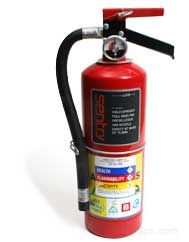|
 Many people often use the terms barbecuing and grilling interchangeably, but they are two completely different cooking processes. While grilling refers to food that is cooked over high heat (cooked directly over the heat or cooked indirectly, away from the heat source), barbecuing refers to foods that are cooked with low heat in a long, slow, indirect heat cooking process. The low heat of barbecuing is generated by smoldering logs or wood chips that are used to smoke-cook the food. Many people often use the terms barbecuing and grilling interchangeably, but they are two completely different cooking processes. While grilling refers to food that is cooked over high heat (cooked directly over the heat or cooked indirectly, away from the heat source), barbecuing refers to foods that are cooked with low heat in a long, slow, indirect heat cooking process. The low heat of barbecuing is generated by smoldering logs or wood chips that are used to smoke-cook the food.
The fuel and heat source for barbecuing are separate from the cooking chamber; however, the cooking chamber contains enough heat to properly cook the food over a long period of time. The cooking chamber fills with smoke, giving the food its characteristic smoked flavor, which varies depending on the type of wood that is used for the fuel. A pan of liquid can be placed in the chamber to produce extra moisture and to keep the turkey from drying out. The best temperature for barbecuing is between 200°F and 300°F, although for turkey and other poultry, the temperature should be closer to 300°F so that harmful bacteria that may be present on the bird is killed within a safe period of time.
It is safe to barbecue a turkey as long as it is not too large. A turkey no larger than 12 pounds is best. Because of the lower cooking temperature used in barbecuing, the internal temperature of a large turkey may not reach the proper level for a long period of time, resulting in an extended period in which harmful bacteria may grow inside the turkey. A small turkey will cook more rapidly than a large turkey; therefore, the internal temperature of the bird will reach a safe temperature before harmful bacteria have a chance to multiply. A cooking time of 20 to 30 minutes per pound should be allowed for a turkey of 12 pounds or less. Turkey pieces that are barbecued will, of course, reach the proper doneness in a shorter period of time than a whole turkey. |

 Many people often use the terms barbecuing and grilling interchangeably, but they are two completely different cooking processes. While grilling refers to food that is cooked over high heat (cooked directly over the heat or cooked indirectly, away from the heat source), barbecuing refers to foods that are cooked with low heat in a long, slow, indirect heat cooking process. The low heat of barbecuing is generated by smoldering logs or wood chips that are used to smoke-cook the food.
Many people often use the terms barbecuing and grilling interchangeably, but they are two completely different cooking processes. While grilling refers to food that is cooked over high heat (cooked directly over the heat or cooked indirectly, away from the heat source), barbecuing refers to foods that are cooked with low heat in a long, slow, indirect heat cooking process. The low heat of barbecuing is generated by smoldering logs or wood chips that are used to smoke-cook the food.